Asus A8R32-MVP Deluxe Review
Asus A8R32-MVP Deluxe
ATI launches its new RD580 / Xpress 3200 CrossFire chipset, so we take a look at the first board to the market.
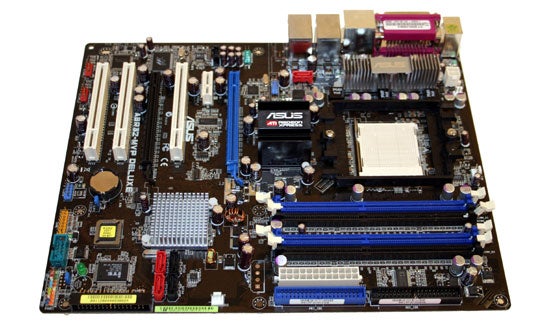
Verdict
Key Specifications
- Review Price: £135.00
RD580. ATI Xpress 3200 CrossFire. Whichever way you say it, it’s the latest chipset from ATI, superseding (but not replacing) RD480 / ATI Xpress 1600 CrossFire. We were sent the RD580 based Asus A8R32-MVP, positioned as a higher-end version of the RD480 based A8R-MVP. However, this board is more than just a chipset replacement.
As exciting as RD580 sounds, on paper it’s not a huge improvement over RD480. When in CrossFire mode, RD480 provides eight lanes for each of the PCI Express graphics slots. RD580 improves on this by providing 16 lanes per PCI Express graphics slot – hence the addition of ‘32’ to the product name. Unlike nVidia’s SLI x16 solution which uses a separate chip to provide the extra 16 lanes, all 32 lines are hard-wired into the new north bridge. Although ATI’s method has theoretical advantages, the actual difference is minimal.
The area that is by far the weakest in ATI’s design is its SB450 south bridge which is slow and doesn’t support new features such as SATA II. Unfortunately, this has not been upgraded yet and it’s unlikely that we will see it before AMD releases Socket AM2. Luckily, due to the modular nature of having a north and south bridge, Asus can, and has, opted to use the superior ULi M1575 south bridge. This has the benefit of faster USB 2.0 performance and support for up to four SATA II devices.
A recent addition to the ATI team Sami Maekinen or “Macci” as he prefers to be known has ensured that RD580 is considerably more adept at overclocking. Considering how poorly RD480 has overclocked in the past, any improvement will be appreciated.
The Asus A8R32-MVP is very similar to the A8R-MVP, but there are differences. For one, Asus has added “Deluxe” to the title. To justify this, Asus has had to do more than just change the chipset. Most obviously this has manifested itself as a black PCB instead of the budget brown, but being Deluxe is more than skin-deep.
Audio has been upgraded from the 5.1-channel AD1986A chipset to the 7.1-channel Realtek ALC 882 chipset with six analogue connections as well as optical and coaxial S/PDIF outputs.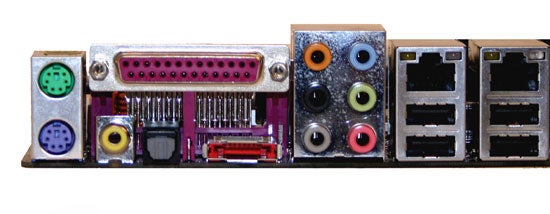
As well as the four SATA II ports that the ULi south bridge provides (which both boards use), Asus has included another two ports courtesy of the Silicon Image Sil3132 chipset. One of these ports is strangely positioned on the opposite end of the board close to the back panel and the second is physically on the back panel for running external devices. However, there is no external SATA power, so making use of this facility is tricky at best.
FireWire has been removed from the back panel and moved on to a blanking plate instead, but an extra Gigabit LAN connection has been added. As well as the four USB ports on the back panel, there is also a blanking plate with an extra two USB ports. 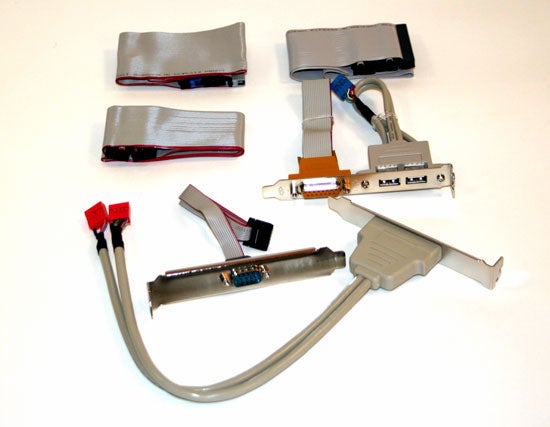
The rest of the details are mainly cosmetic, but the one that makes a big difference is change in position of the PCI Express slots. Instead of being crowded right next to each other which can cause heat issues, they are now further apart with the second slot swapped around with the first PCI slot. The number of slots is still the same, with three PCI, one PCI Express x1 and naturally two PCI Express x16.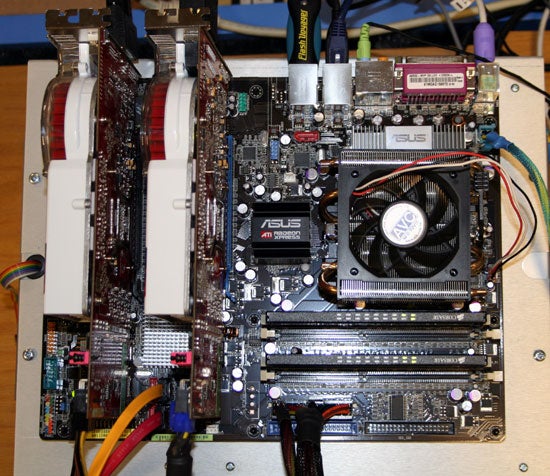
Whereas the A8R-MVP board has a molex connector to supply extra power to the board when running in CrossFire, this has been removed on the A8R32-MVP Deluxe. We can only assume this removal is the reason we had problems using our Silverstone 650W power supply with the newer motherboard, despite it working fine with an identical set up on the A8R-MVP. We were surprised to see that this board is still only using a four phase power setup instead of the eight phase configuration that we have seen on the equivalent Asus SLI motherboard.
”’Overclocking”’
As already mentioned, one of the major aspects of this chipset upgrade is that of overclocking. The BIOS is feature packed, as we have come to expect from Asus. It uses a rather non-standard layout which takes a little getting used to, and the more you look around the more options seem to unravel. As well as FSB adjustment up to 400MHz, there is full adjustment of memory, HyperTransport, FID/VID and voltages to almost every aspect of the motherboard – including an extra 200mv boost to the CPU Vcore. At first glance, the BIOS on the A8R-MVP is very similar, but is lacking some of the extra tweaks such as north bridge voltage control.
With a lowered multiplier, the A8R32-MVP had a stable speed all the way up to 380MHz putting it easily on par with an nForce 4 motherboard. The A8R-MVP on the other hand was a huge disappointment being stable at a maximum of 220MHz FSB, even with a lowered CPU and memory multiplier. Kudos to Macci for a job well done.
Using an Asus A8R-MVP for comparison we took it upon ourselves to pit the two boards head to head, to find out if the extra eight PCI Express lanes per card actually increase performance. We used an AMD Athlon FX-60, two 1GB Corsair CMX1024-3500LLPRO memory modules and an ATI reference X1900 XT Crossfire setup. 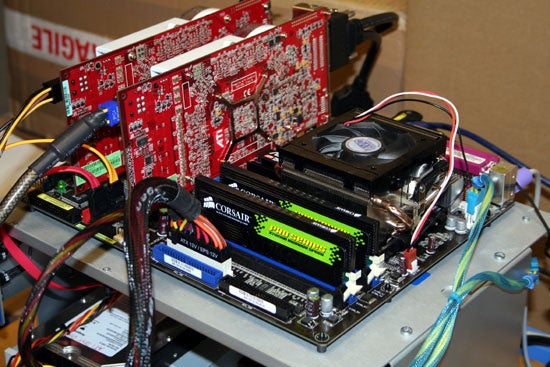
Tests were run using Call of Duty 2, Quake 4, Counter-Strike: Source and 3DMark06. All tests were done using intensive time demos recorded in-house. In the case of CS:S, the demo was recorded on the Militia map which uses the same HDR technology as seen in Half Life 2:Lost Coast. All tests were run three times and the averages were taken to remove anomalous data from the results.
We ran all the tests at 1,280 x 1,024, 1,600 x 1,200, 1,920 x 1,440 and 2,048 x 1,536 each at 4x FSAA with trilinear filtering and 4x FSAA with 8x AF.
”’Results”’
The results achieved were quite strange. 3DMark, being a synthetic benchmark not surprisingly tallied with the theoretical improvement with a global minor increase in performance.
Call of Duty 2 showed a slightly more exaggerated result with around a 10 per cent increase in performance across the board.
Quake 4 showed no increase in performance at all, perhaps due to ATI’s implementation of OpenGL – in a few cases in fact, RD480 scores better.
Most surprisingly though, were the Counter-Strike: Source results where RD480 was consistently around 10 per cent faster. This goes against all logic, but the results speak for themselves.
”’Verdict”’
In a best case scenario, RD580 offers 10 per cent performance increase over the older board, but in some cases it is slower or no better at all. However, it is a considerably better overclocker than RD480 ever was.
At £135.11, the A8R32-MVP is almost double the price of the A8R-MVP. Ignoring performance difference, this brings slightly better audio, two more SATA II channels and considerably better overclocking potential. Whether you consider those benefits enough to justify the extra cost is a matter of personal choice and will ultimately depend on how important overclocking is to you.
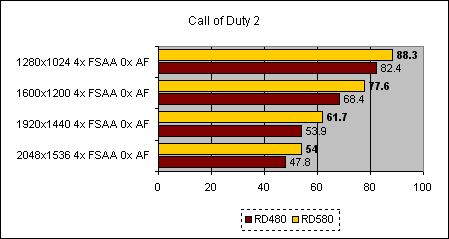
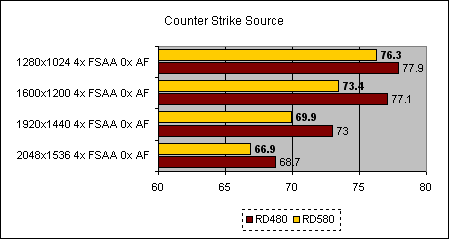
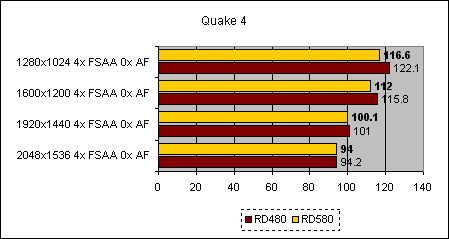
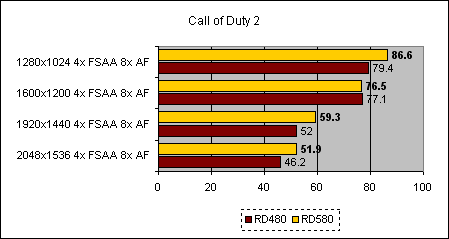
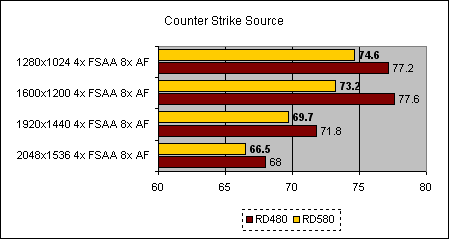
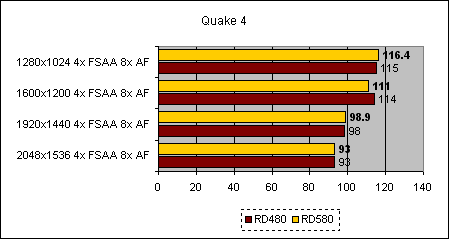
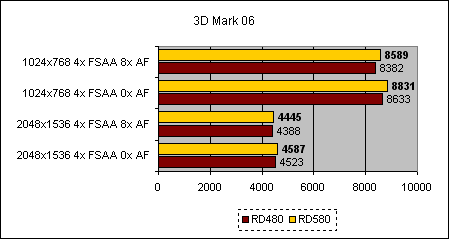
Trusted Score
Score in detail
-
Value 6
-
Performance 8

